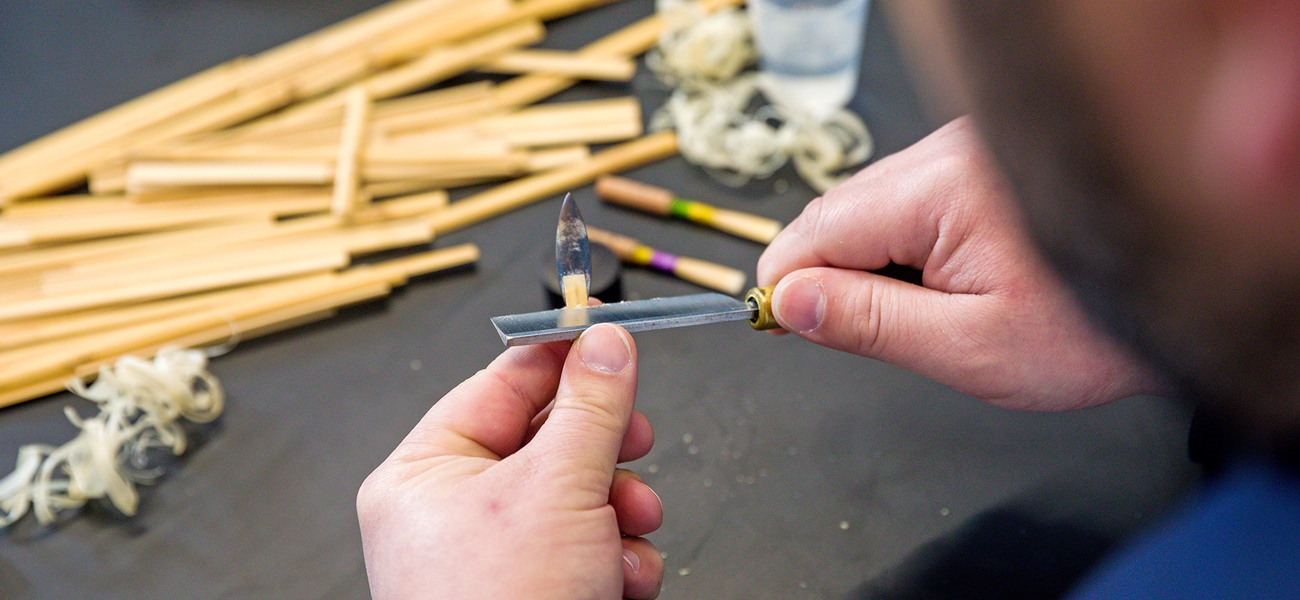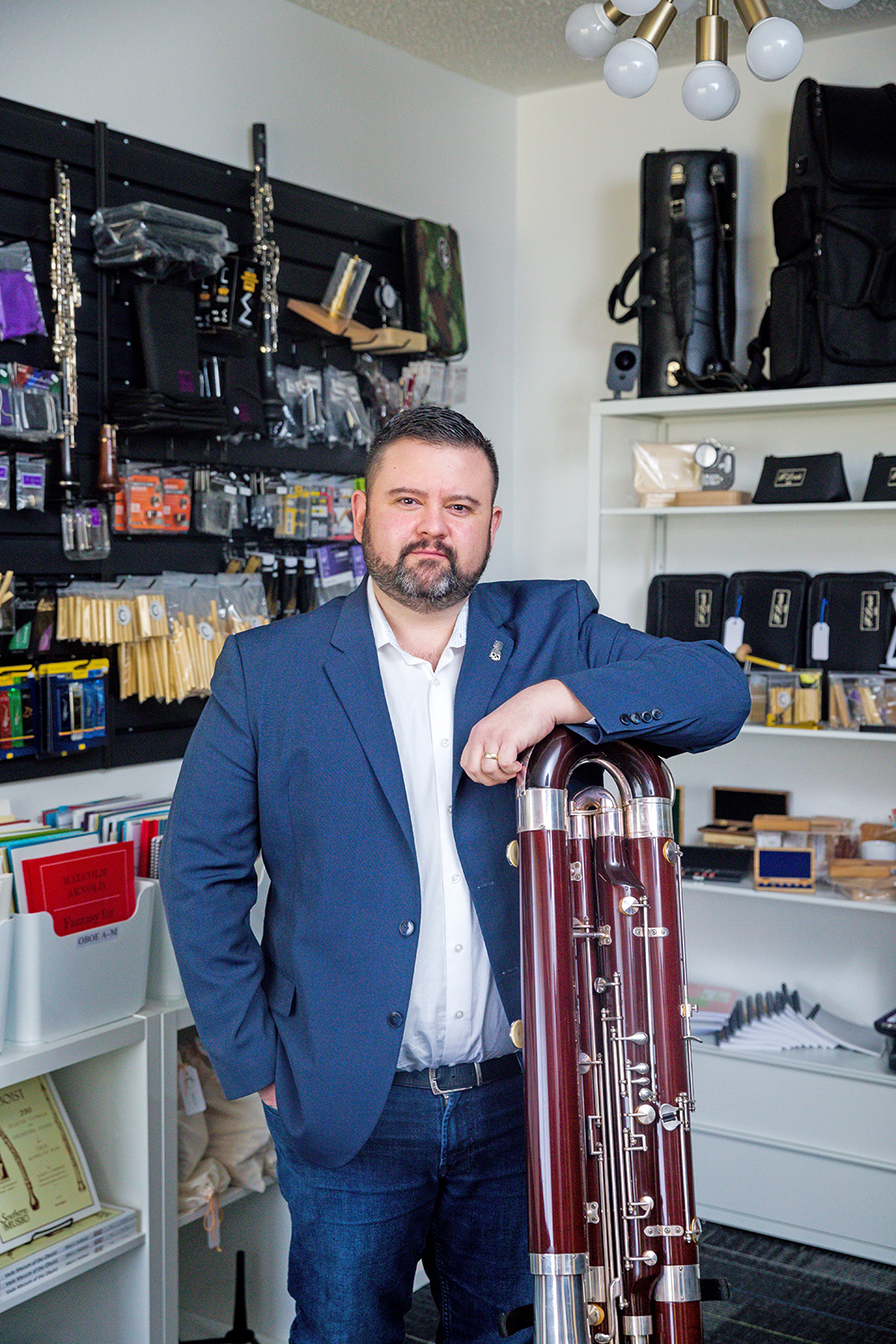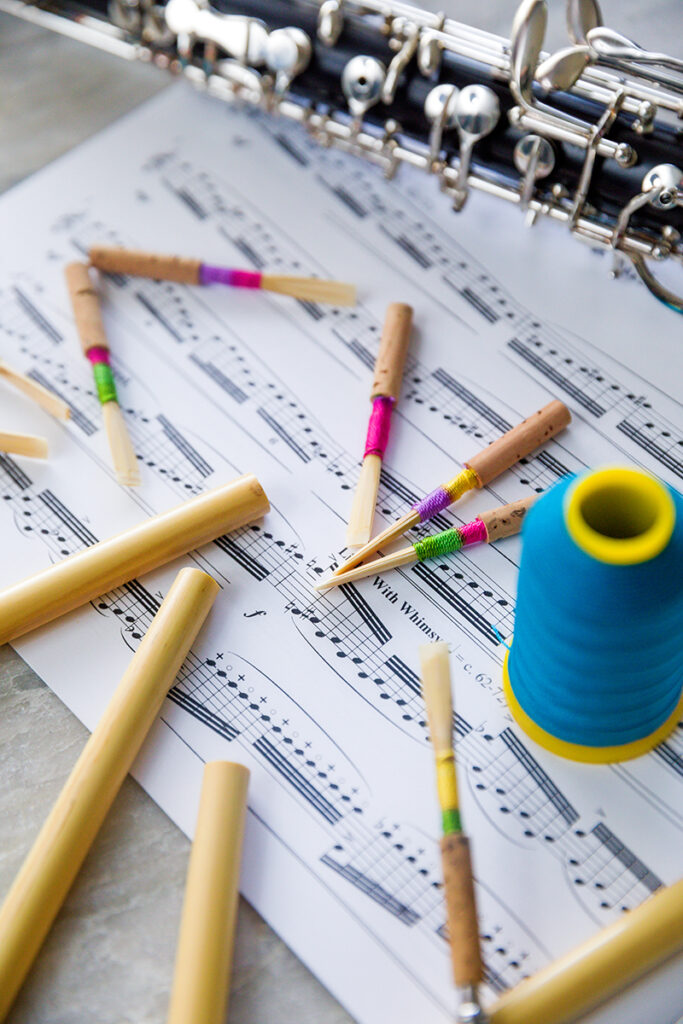
Local music professor builds a business out of crafting delicate reeds for oboe players
To the uninitiated, the oboe is just another instrument in a symphony orchestra. But to insiders, it’s equal parts challenging, quirky and beautiful. So pure is its pitch that orchestras begin their tuning process to the oboe’s A note. Mellow and slightly nasal, the instrument has been described as resembling a duck—if that duck were a songbird. But to tease out the oboe’s unique sound, several factors must converge, and none is more important than the quality of its reed. A subpar reed makes the oboe wheeze and whine—sounding more duck call than duck song.
And here’s what makes it quirky. The reed of an oboe is nothing like that of other woodwind instruments, such as the saxophone or clarinet.
“Oboes are one of the few woodwinds that require a double reed. Bassoons are another,” says Everette Scott Smith, a Southeastern Louisiana University professor of oboe. “They’re outliers. Their reeds are notoriously delicate, temperamental and very personal to the musician.”
|
|

That’s why in addition to teaching oboe, Smith opened a specialty shop in Baton Rouge, where he makes high-quality double reeds by hand. Chemical City Reeds Woodwind Specialists, which he started in 2016, is one of the few shops like it in the Gulf South. The closest similar establishment is in Dallas.
“Reeds are a big reason why a lot of young musicians abandon their instruments,” Smith says. “This is a way I can help keep students playing.”

Chemical City Reeds has grown to also sell a variety of woodwind instruments, sheet music and supplies. Smith teaches private music lessons here, and he teaches students how to make their own reeds. Those who stick with the oboe will need to know how, he says.
Unlike reeds that rest against a mouthpiece, double reeds protrude like a straw. They are formed from two narrow layers of a bamboo-like material honed until perfectly matched, then laced together at the base. The reed’s tip comes together in two paper-thin layers. Between them, you can just make out the small pocket of air where the musician blows, creating the low, robust sound that makes these instruments musically distinct and structurally high maintenance.
As musicians become more serious about playing oboes or bassoons, they need to find a source for good reeds, which are often replaced daily, and can make all the difference in quality of sound, Smith says. Good double reeds can’t be bought in bulk. They must be sourced from a specialty maker, or made by the musician.
“When you’re studying oboe [in college], about half of the curriculum is learning to make your own reeds,” Smith says. “If you’re playing a lot, they’ve got about a 7-hour life, and some schools of thought believe you should make a new reed every day.”
At his studio, Smith makes reeds from tube cane, processed from the Arundo donax, a hardy plant grown in the south of France. He splits the tube down the middle, carefully honing two 70 millimeter-long pieces with small manual vices and hand tools. The process is intricate and varies globally. American double reeds, for example, are carved with a higher level of detail than European ones, Smith says. Career oboists will master carving reeds that suit their own mouths, their styles of play and even their local climate conditions, since double reeds are finicky about humidity levels.
For his part, Smith makes reeds for young musicians, as well as more experienced ones who need a backup supply. From time to time, Smith has found himself filling orders for an oboist in a panic before a big audition.
“Once I had to leave some reeds in the mailbox at 11 o’clock at night,” Smith recalls.
“The great thing about double reed instruments is you have all the control in the world to make them sound beautiful,” he continues. “But that’s also the worst thing, that you have all the control in the world. It’s all up to you.” chemicalcityreeds.com
This article was originally published in the May 2021 issue of 225 magazine.
|
|
|
